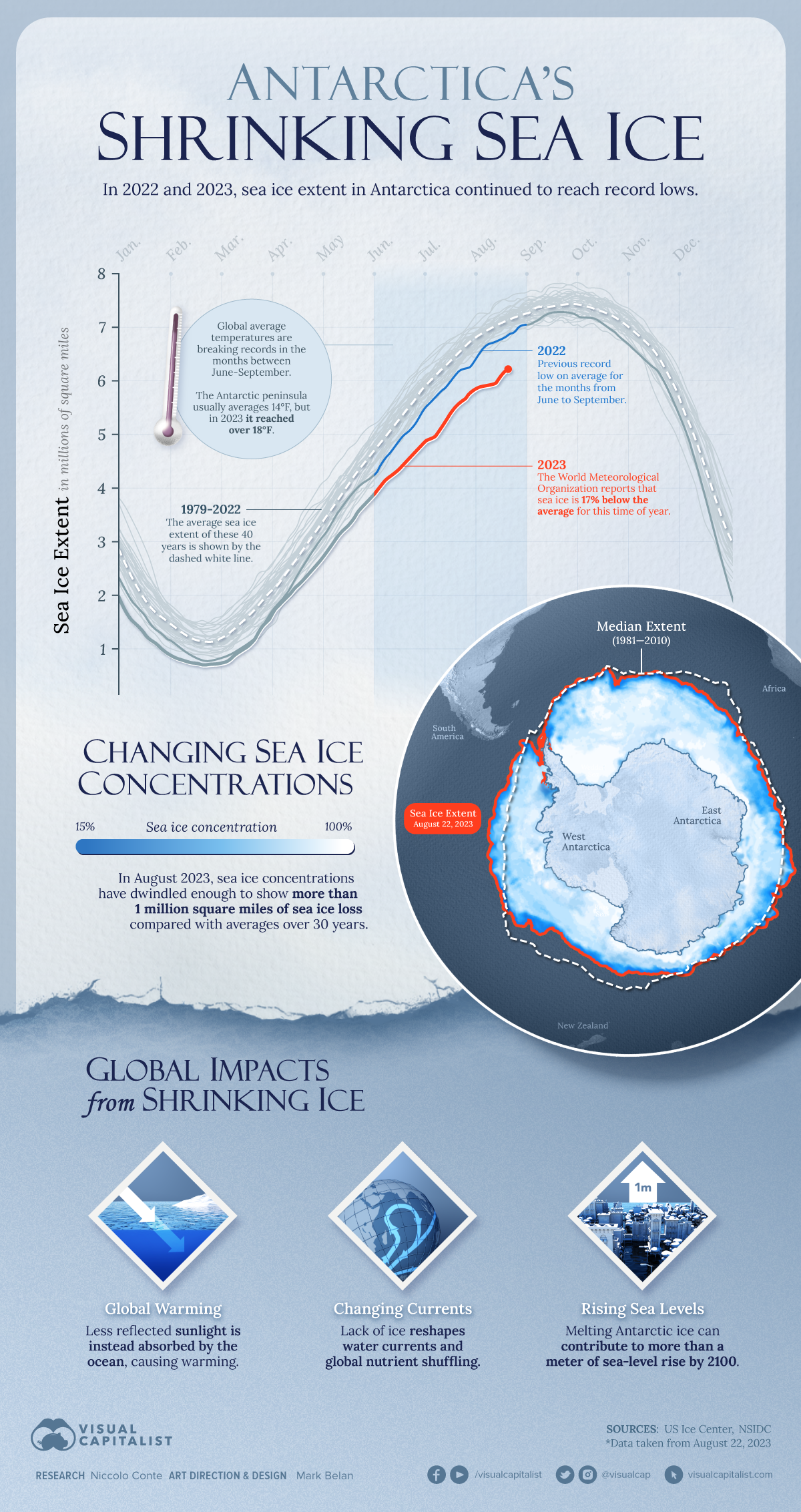GREENTracking Antarctica Sea Ice Loss in 2023Published 7 hours ago on August 25, 2023
By Mark Belan
Article/Editing:
Omri Wallach
Antarctica sea ice loss tracked from 1979 to 2023
Tracking Antarctica Sea Ice Loss in 2023
Scientists have been tracking the extent and concentrations of Antarctica’s sea ice for decades, and the last two years have raised global alarm bells.
As temperatures are breaking records around the world, the southernmost continent’s ice sheet is visibly smaller than it has been in decades past.
The above graphic uses tracking data from the National Oceanic and Atmospheric Administration (NOAA) and the National Snow and Ice Data Center (NSIDC) to visualize sea ice extent in Antarctica as of August 2023
How Much Ice Has Antarctica Lost?
According to satellite data tracked by the NSIDC, sea ice extent in Antarctica has shrunk to record lows.
When compared to previously charted data dating back to 1979, daily record lows in sea ice extent have been recorded for every day in 2023 so far.
Here is how daily Antarctic sea ice extent in 2023 compares to 2022 (which had many of the previous record lows), and the median from 1981 to 2010.
Date 2023 (km²) 2022 (km²) Median (1981‒2010, km²)
Aug 24 15.87M 17.29M 17.94M
Aug 23 15.79M 17.24M 17.91M
Aug 22 15.74M 17.21M 17.89M
Aug 21 15.69M 17.19M 17.87M
Aug 20 15.64M 17.14M 17.84M
Aug 19 15.55M 17.11M 17.82M
Aug 18 15.45M 17.06M 17.79M
Aug 17 15.34M 16.99M 17.73M
Aug 16 15.22M 16.93M 17.68M
Aug 15 15.12M 16.88M 17.63M
Showing 1 to 10 of 236 entriesPreviousNext
Antarctica’s sea ice extent on August 24, 2023 was 1.42 million square kilometers smaller than the year before. When compared to the median extent for that date from 1980 to 2010, it was 2.07 million square kilometers smaller.
Keep in mind that July and August are the coldest months in Antarctica. Its position on the South Pole gives it a very long winter ranging from the end of February to the end of September, with ice building up before melting temperatures arrive in October.
Antarctica Sea Ice and the Rest of the World
Even though the continent is thousands of kilometers from most of Earth’s land and populace, its ice has an important impact on the rest of the planet.
Antarctica’s large ice sheet is able to reflect a lot of sunlight in sunnier months, reducing the amount absorbed by the ocean. The wider its extent builds up over the winter, the more sunlight and heat it is able to reflect.
It’s also important to consider that this ice comes from a regular pattern of freezing and melting ocean water. The more ice is lost to the oceans compared to what accumulates in a given year, the higher sea levels rise around the world.
Enjoying the data visualization above?
Your email address
Subscribe






























